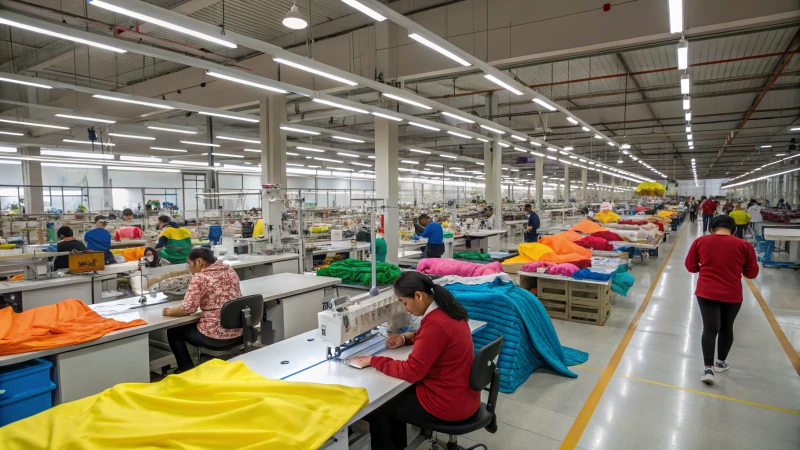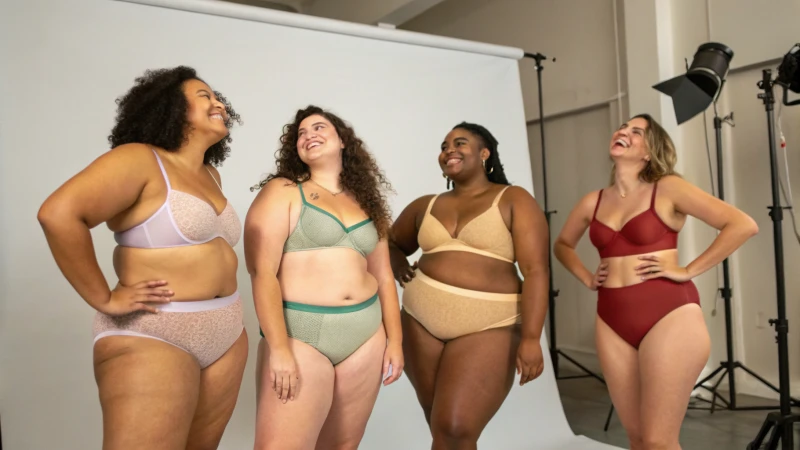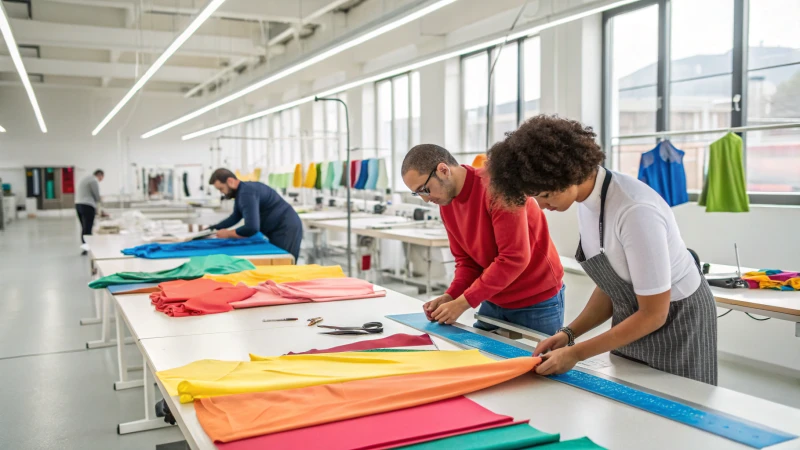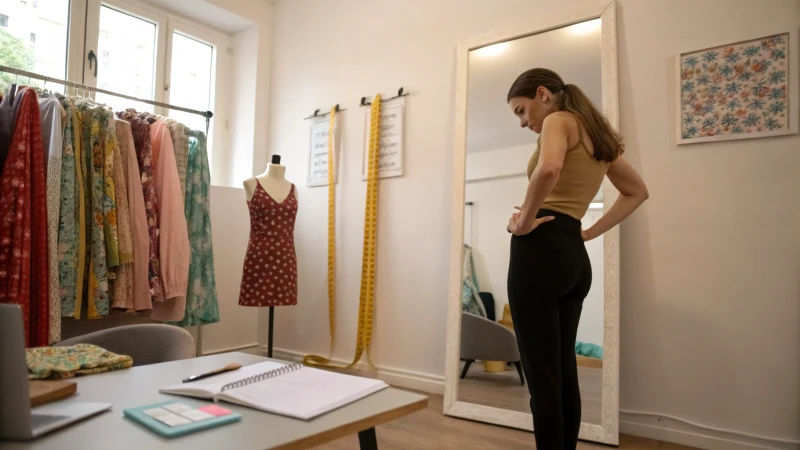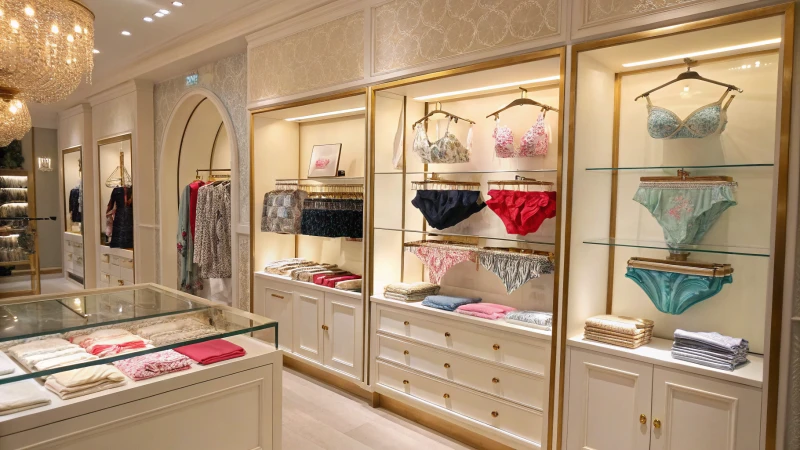
I still recall the first time I learned about OEM in custom underwear production. It felt like finding a hidden path to creativity and control.
OEM in custom underwear production involves creating garments from the client's unique designs and requirements. This approach allows high customization. Clients have control over the brand and the final product.
When I first explored this model, I felt very surprised. It let brands like mine choose every detail, from fabric to size and branding. It's like having a blank canvas. You decide every part of the artwork. OEM means you work with experts who realize your vision. You stay in control. This strategy offers unique customization. It stands out compared to other models. Many love it for its quality and individual touch.
OEM allows brands full control over product design.True
OEM manufacturers produce items based on client specifications, ensuring design control.
OEM manufacturers typically handle product marketing.False
OEM focuses on production, not marketing; clients manage branding and sales.
What Sets OEM Apart from ODM in Underwear Manufacturing?
Understanding the world of underwear production is not easy. It becomes even harder when choosing between OEM and ODM. Knowing their differences might really help your brand. This knowledge is very important.
OEM in underwear manufacturing involves developing products from the ground up according to a customer's unique designs. ODM, on the other hand, uses pre-existing designs that brands can adjust. OEM provides more customization. This means personalized products. ODM offers faster access to the market. It requires less effort on design work.
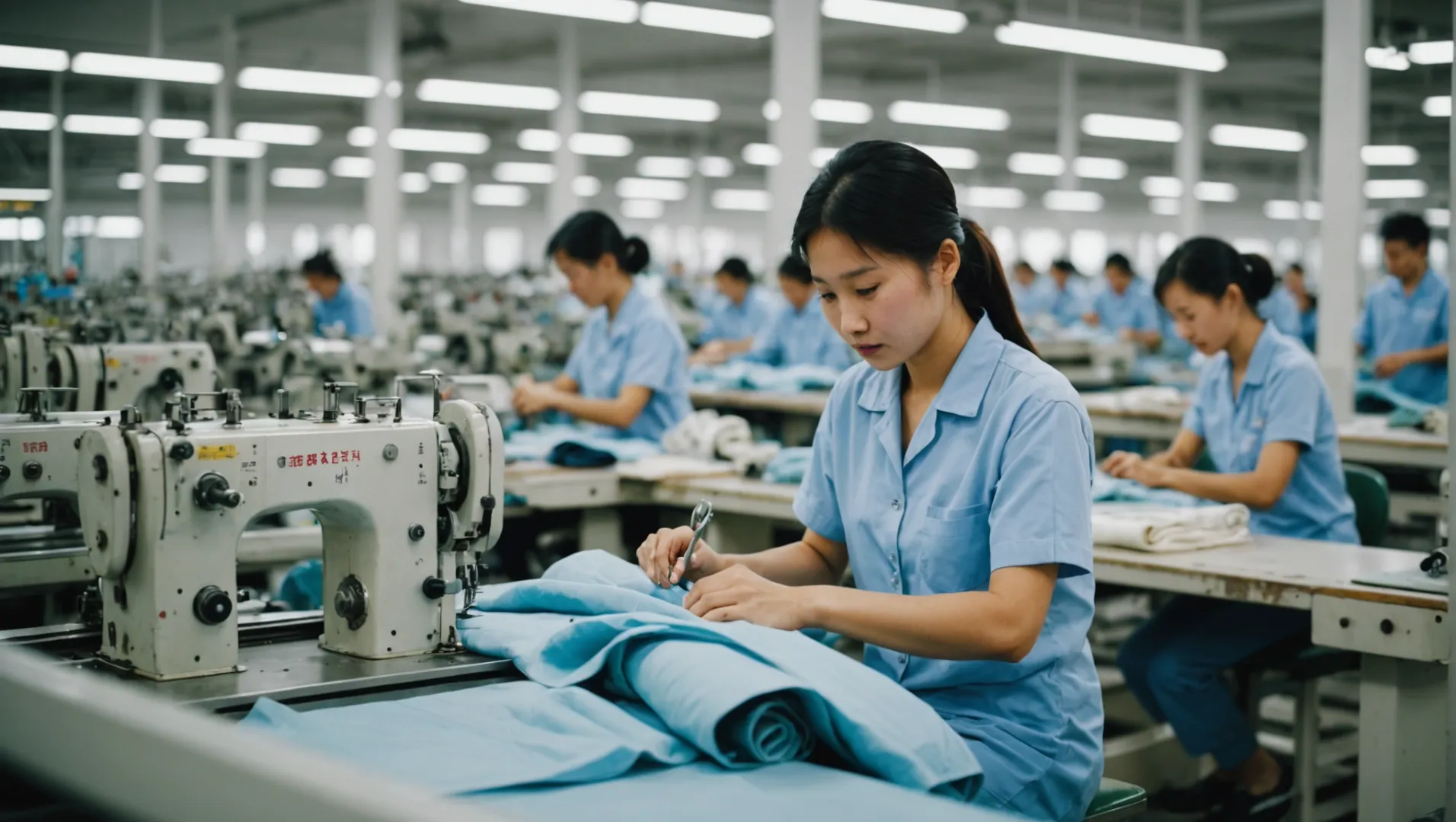
Understanding OEM in Underwear Manufacturing
OEM, or Original Equipment Manufacturer, is a model that offers brands complete control over their product design. In underwear manufacturing1, this means that the client provides detailed specifications, including patterns, materials, and branding elements. The manufacturer's role is to bring these designs to life with precision and expertise.
This approach is ideal for brands that have a distinct vision and want to differentiate themselves in the market. OEM allows for high customization, ensuring the final product is unique and aligned with the brand's ethos. However, it requires a significant investment in design and development, as well as close collaboration with the manufacturer to ensure quality control.
Holding a prototype that matched my vision was thrilling. It was my brand in my hands. But big power means big responsibility. The journey needs a lot of time and money. For people like me with a bold vision who want to stand out, OEM is the best partner. You really need a clear plan.
Exploring the ODM Model
Then comes ODM or Original Design Manufacturer. It involves selecting from pre-existing designs that a manufacturer offers. This model is beneficial for brands looking to enter the market quickly without investing heavily in design resources. ODM manufacturers usually provide a catalog of designs that clients can choose from and customize minimally, such as adding a logo or selecting colors.
Imagine flipping through a catalog full of designs. You pick one and change the logo or color. It feels like having a closet ready for any event. This works great for new brands when you want to enter the market quickly without spending too much.
This method allows for rapid production and quicker time to market, making it ideal for startups or those wanting to test the market with minimal risk. However, your design might appear under other brands, which hurts your brand's uniqueness—potential issues with similar products being offered to multiple brands arise here too.
To understand more about this approach, explore ODM in apparel2.
Key Considerations When Choosing Between OEM and ODM
When deciding between OEM and ODM, it's crucial to consider factors such as budget, time constraints, and brand positioning:
- Budget: OEM requires more money due to its bespoke nature but results in unique products.
- Time: ODM offers cost savings and speed but might not fully align with your brand’s specific identity.
- Brand Image: Evaluating your business goals will help determine which model suits you best.
In the end, it's all about matching choices with business goals:
- Do I focus on making something unique that mirrors my brand?
- Or is it more important to get things on shelves quickly?
These choices form my plan in underwear manufacturing models3, ensuring I remain true to my brand values while meeting the market's needs.
OEM allows clients full control over product design.True
OEM focuses on producing items based on the client's specific designs.
ODM offers more customization options than OEM.False
ODM typically involves ready-made designs, limiting customization compared to OEM.
What Are the Key Benefits of Using OEM for Custom Underwear?
Imagine turning your brand's vision into reality easily and efficiently. Keep a personal touch, too.
Using OEM for custom underwear lets brands explore deep customization, reduce expenses and use expert manufacturing skills. This collaboration allows brands to focus on creative design. OEMs manage quality production. Every piece matches the brand's unique essence.
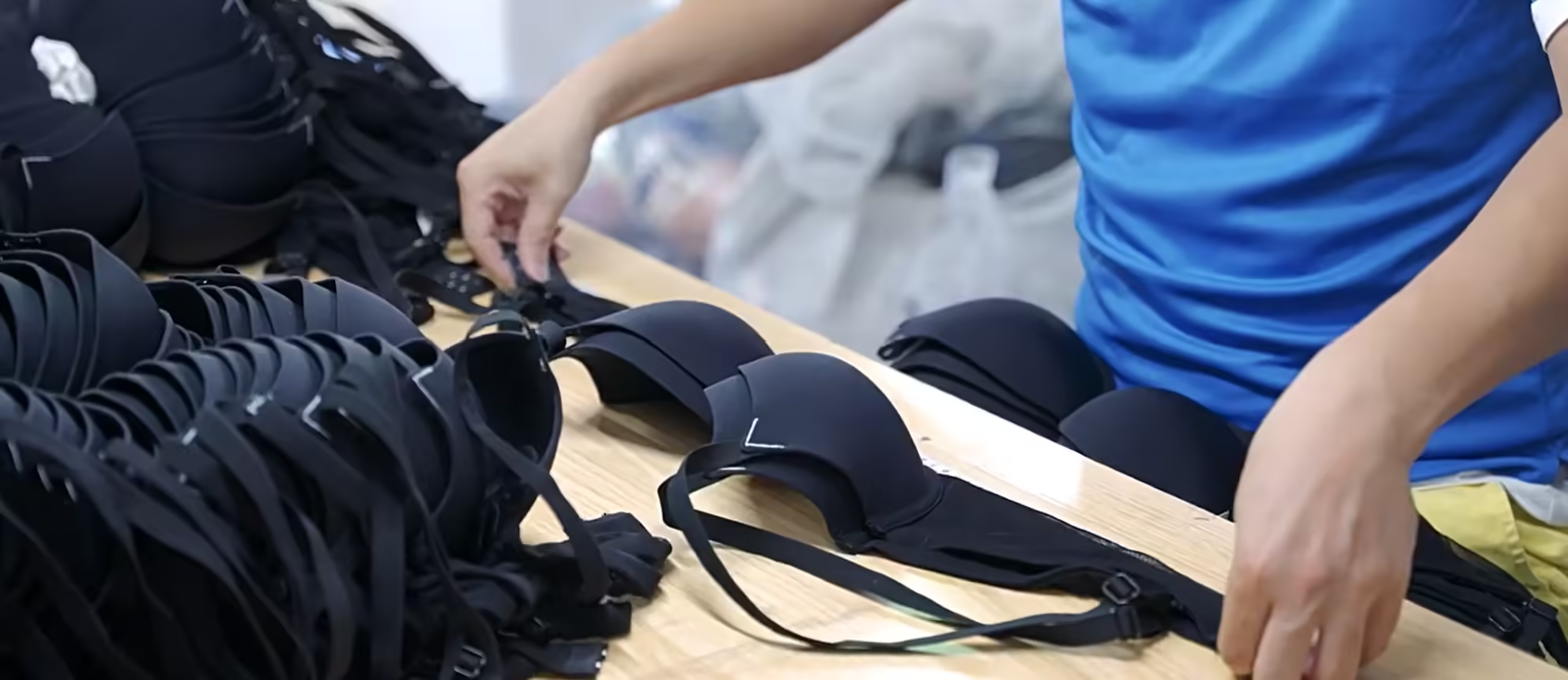
More Custom Options
I thought about starting custom underwear. I loved the little things - soft fabric, detailed patterns, and how they showed a unique brand. Working with an OEM opened many new options. They let me change everything, like picking eco-friendly fabrics4 or special stitching that made my products unique. It felt like having a creative friend bringing wild ideas to life. These custom options helped me reach special markets. This really helped my brand stand out.
Saving Costs and Growing
Production costs scared me at first. But an OEM was like a secret way to save. They had supplier networks and production lines. I spent much less, even with small orders. I added more products without huge starting costs. Growing became exciting, not risky.
Expert Help and New Tech
The technical side of making underwear was hard at first. But an OEM's experts helped a lot. They brought new tech, like special stitching5, to my designs. It improved comfort and strength. I didn't worry about making things in-house. I used top production methods and kept high standards.
Focus on Main Strengths
I could focus on design, marketing, and chatting with customers. It was freeing. Outsourcing production let me do what I loved - interacting with fans and creating new brand ideas. The OEM made things run smoothly so I could react to feedback quickly6. This focus kept the brand competitive and customers happy.
OEMs allow brands to control product design fully.True
OEMs work based on the client's unique designs and specifications.
Using OEMs limits customization options for underwear brands.False
OEMs provide high customization, aligning products with the client's vision.
How Do Brands Communicate Their Specifications to OEMs?
Have you ever thought about how brands bring their ideas to reality with OEMs?
Brands link with OEMs by sharing detailed documents. They use digital tools to help this process. Direct teamwork is important. This teamwork involves sharing product plans. They use CAD software for exact design. Regular feedback meetings help everyone understand. Clear communication is very important.

Using Detailed Documentation
I first entered the industry feeling confused by the large amount of paperwork. Companies often rely on detailed documents to share product details7 with manufacturers. These aren't just notes; they include technical drawings and exactly planned product sheets. Such documents provide all the information about a design, much like handing someone a map to avoid mistakes. Manufacturers understand clearly what's needed, reducing errors.
Using Digital Tools
We live in a tech-focused world, and companies are really leveraging this technology when working with manufacturers. I've seen how CAD (Computer-Aided Design) software changes the process as companies share complicated designs digitally, ensuring nothing gets misunderstood. Tools like Trello or Asana help a lot by allowing fast updates8 and facilitating easy communication so everybody stays informed.
Direct Collaboration and Feedback Loops
Meetings are very effective in my opinion. Regular meetings between company workers and manufacturing teams are important, whether face-to-face or through video calls, to keep communication open. Creating a feedback loop where questions can be asked and solutions found is crucial; it’s more than just sharing information—it's about building a partnership where they improve details together.
Challenges and Solutions in Communication
Challenges do exist, with miscommunication being a big issue often caused by language barriers or different cultures. Bringing in translation services helps significantly, as does hiring bilingual workers. Cultural training9 can truly help smooth interactions—it’s a real help. Clear plans for solving conflicts are necessary because nobody wants a project delayed by misunderstandings!
OEMs handle both design and production for clients.False
OEMs focus on production based on client designs, not creating designs.
Clients provide detailed blueprints to OEMs for production.True
Clients give specific designs and specifications for OEMs to produce.
What Challenges Might Brands Face with OEM Manufacturing?
OEM manufacturing often feels like a complex maze. Understanding the challenges helps a lot. People really transform possible problems into opportunities.
Brands entering OEM manufacturing might encounter difficulties. Keeping quality consistent is one challenge. Protecting their ideas is another. Managing complex supply chains is also hard. Careful planning helps them. Active management supports them. These challenges very often become chances. Brands often grow through innovation.

Quality Control Challenges
I remember my first time entering OEM manufacturing10. It was exciting but also scary. I had a clear picture of my product. Giving control to others worried me. Quality control was my main concern. Would the product match my standards? I used regular checks and open talks with the manufacturer. That way, my expectations were met. Sometimes, they were even surpassed.
Intellectual Property Risks
Sharing my designs felt like sending a kid to school for the first time. Exciting but also terrifying. I feared someone might steal or misuse my ideas. Robust contracts and confidentiality agreements11 became essential. They protected my interests and gave me peace of mind, allowing me to focus on creating new things.
Supply Chain Complexities
Handling supply chains was a challenge I didn't fully expect. Connecting different suppliers and the manufacturer was tough—it felt like juggling fire. Supply chain tools became very helpful, making processes tidy and work more efficient.
Technological Integration Issues
Adding new technologies to current systems was hard—like fitting a square peg into a round hole. Careful planning with tech experts ensured everything worked well together, though it took time. But it was rewarding as it kept my brand innovative.
Dependence on Manufacturer
Relying on one manufacturer worried me—what if they had labor problems? To lower this risk, I chose more manufacturers, reducing dependency and maybe increasing flexibility so I could adapt quickly to unexpected changes.
Regulatory Compliance
Following various rules felt like learning a new language. Finding manufacturers who understood these rules well was key in handling complex regulations effectively, ensuring that my products met all needed standards.
Facing these challenges requires strategic planning and clear contracts alongside proactive management to ensure OEM partnerships are not only successful but also transformative for brands in the long term.
OEM allows for complete product customization by brands.True
Brands can specify designs, sizes, and branding, ensuring unique products.
OEM manufacturers handle all aspects of product design.False
OEMs focus on production; clients provide detailed design specifications.
Conclusion
OEM in custom underwear manufacturing allows brands to create unique products based on their designs, providing full control over customization while leveraging the manufacturer's production expertise.
Learn how OEM manufacturing impacts customization in underwear. ↩
Discover how ODM can fast-track market entry. ↩
Understand which model best fits your business strategy. ↩
Learn how eco-friendly materials enhance product appeal and environmental responsibility. ↩
Explore how this technology boosts comfort and durability in garments. ↩
Understand how consumer insights drive innovation and product improvement. ↩
Learn what details should be in your product specifications. ↩
Discover how digital tools improve real-time collaboration. ↩
Understand how cultural training enhances cross-border communication. ↩
Discover strategies for maintaining high-quality standards in OEM production. ↩
Learn methods to safeguard your intellectual property during OEM collaborations. ↩


